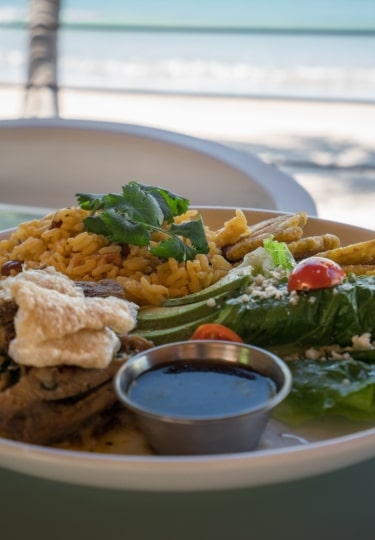Like the island itself, traditional Puerto Rican food is influenced by a mix of cultures. Indigenous Taino ingredients such as plantain, rich Spanish sauces, and typical African recipes combine into a warm, delicious mix.
While “barbeque” is a Taino technique—and word—frying is a more common method of cooking. Traditional dishes such as mofongo, alcapurrias, or arepas all rely on the deep fryer.
But you’ll also find plenty of lighter dishes such as the sweet, custard-like tembleque. Ceviche—marinated fresh fish—is also a perfect dish for this beautiful tropical island, and one of many to try on your next visit.
Mofongo
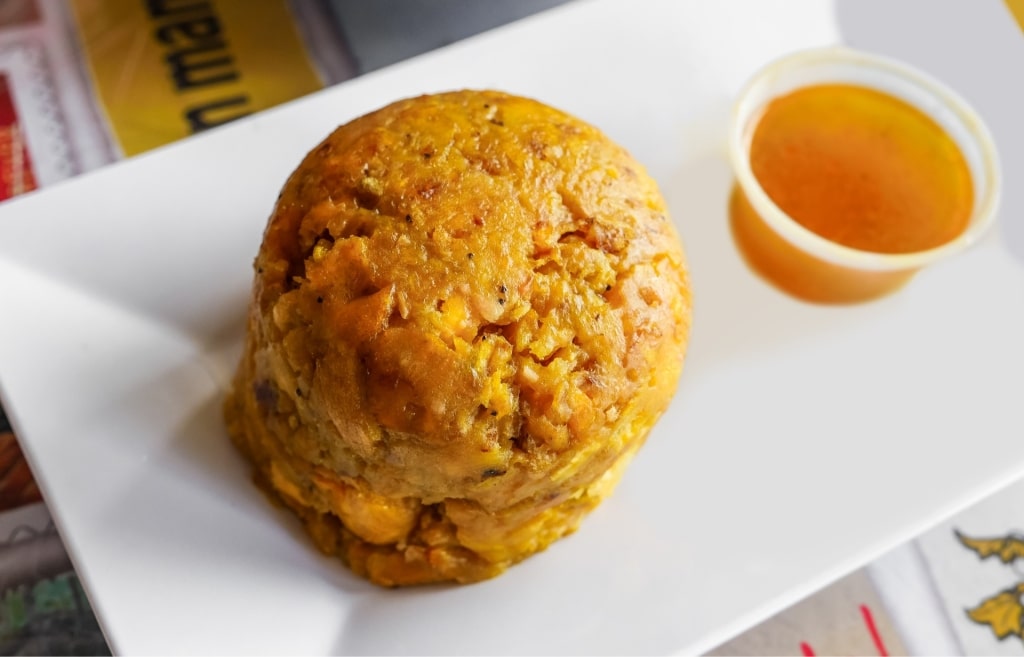
Mofongo
Puerto Rico is known for its food and the very first dish you have to try is mofongo. It’s a staple of local cuisine, reflecting the island’s African, Spanish, and Taíno influences.
The main ingredient is green plantains, which are fried and then mashed in a wooden mortar called a pilón, a popular Puerto Rican souvenir. Pounding this during family gatherings is a communal event, adding to the dish’s warm associations for every Puerto Rican.
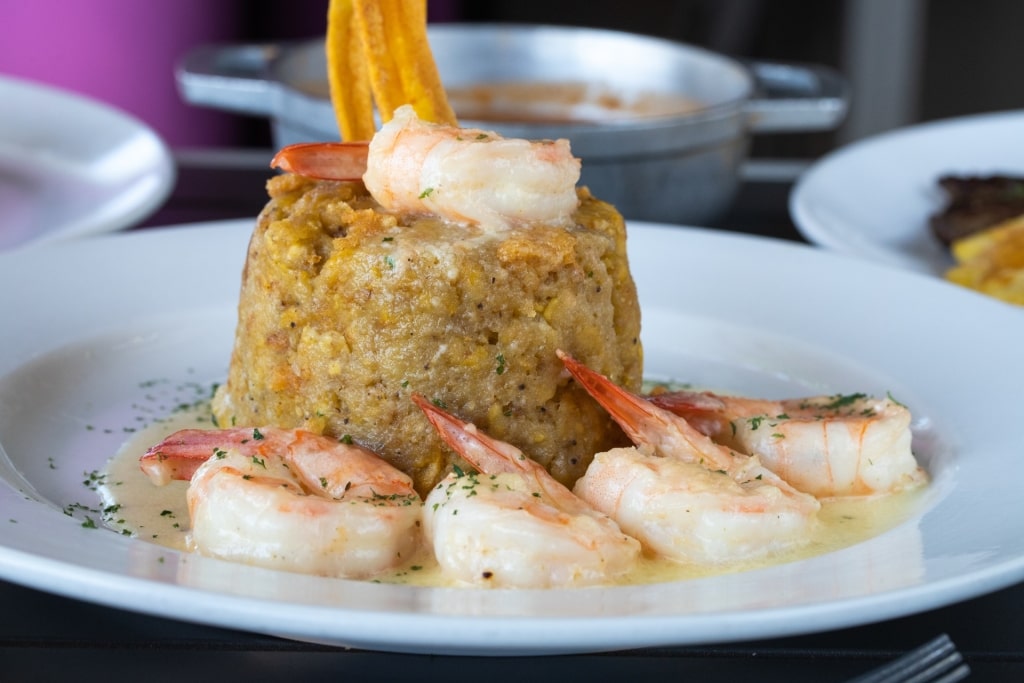
Mofongo
You might be surprised to find that not many restaurants offer mofongo. That’s because it’s time consuming to make well, getting the right balance of smoothness and flavor.
The mash is flavored with garlic, olive oil, and—most importantly—pork cracklings. Called chicharrones locally, these are often seen as a snack on their own.
Mofongo is usually served up in a dome or ball and can be a side dish or main course. Somewhat dense and heavy, it will usually come with a stew, sauce, or broth—traditionally chicken broth—to add balance.
Arepas
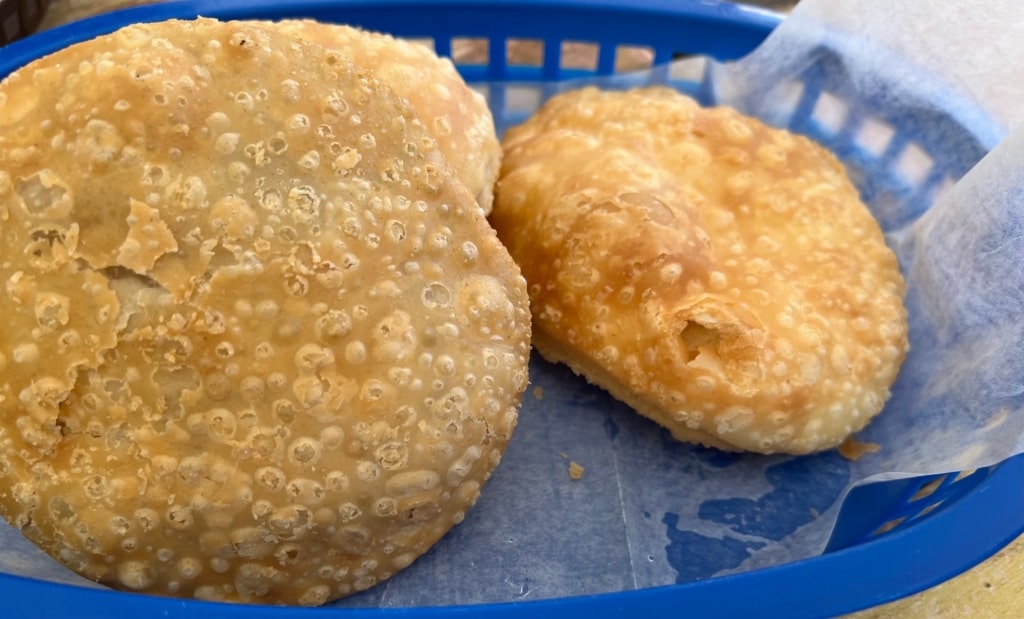
Arepas
Arepas are a fried bread made with wheat flour, and are often served for breakfast. You’ll find them sold on the street to be eaten with hot, strong coffee.
Arepas can be sweet, savory, plain, or stuffed with fillings such as cheese. Adding coconut milk to the flour mix is very common.
The dough is rolled out, then cut into rounds, often using a glass. These discs are then deep fried until they puff up.
Read: Best Things to Do in San Juan, Puerto Rico
Arroz con Gandules
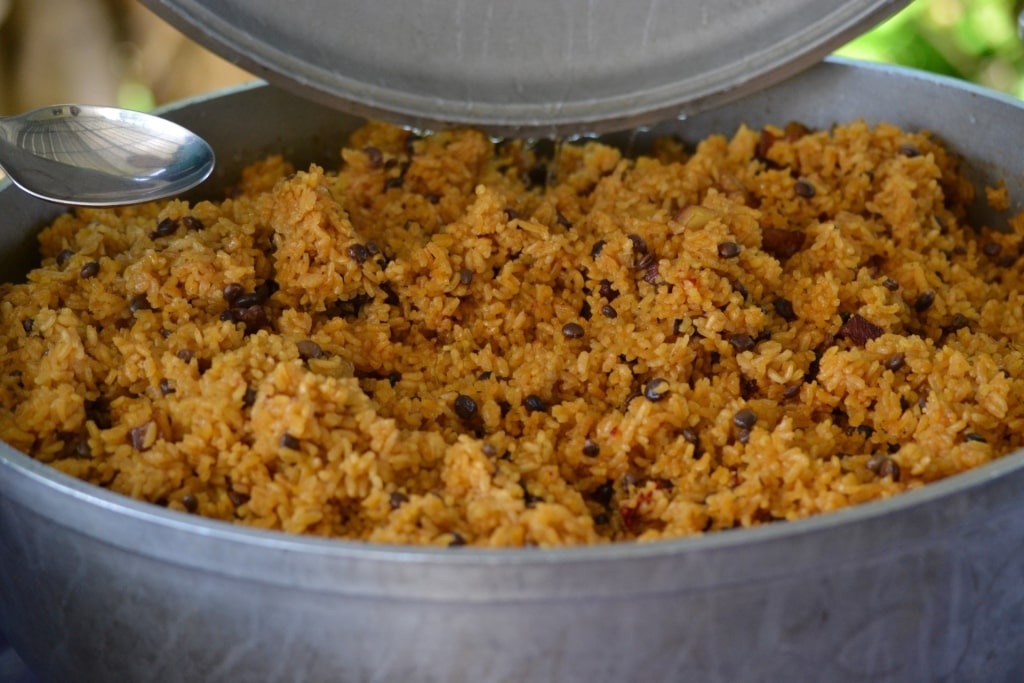
Arroz con gandules
Arroz con gandules is often called the national dish of Puerto Rico. It’s made from rice cooked with pigeon peas.
Pigeon peas—or gandules—are actually small beans with a nutty flavor. They come fresh, frozen, or canned, but the fresh ones obviously taste better.
Flavoring comes from a sofrito made with a fried blend of onions, peppers, garlic, and cilantro. Achiote oil is used, giving the dish a characteristic yellow-orange color.
The sofrito is often fried with salted pork for extra flavor. The rice, pigeon peas, and a broth are added, then cooked until the rice absorbs the liquid.
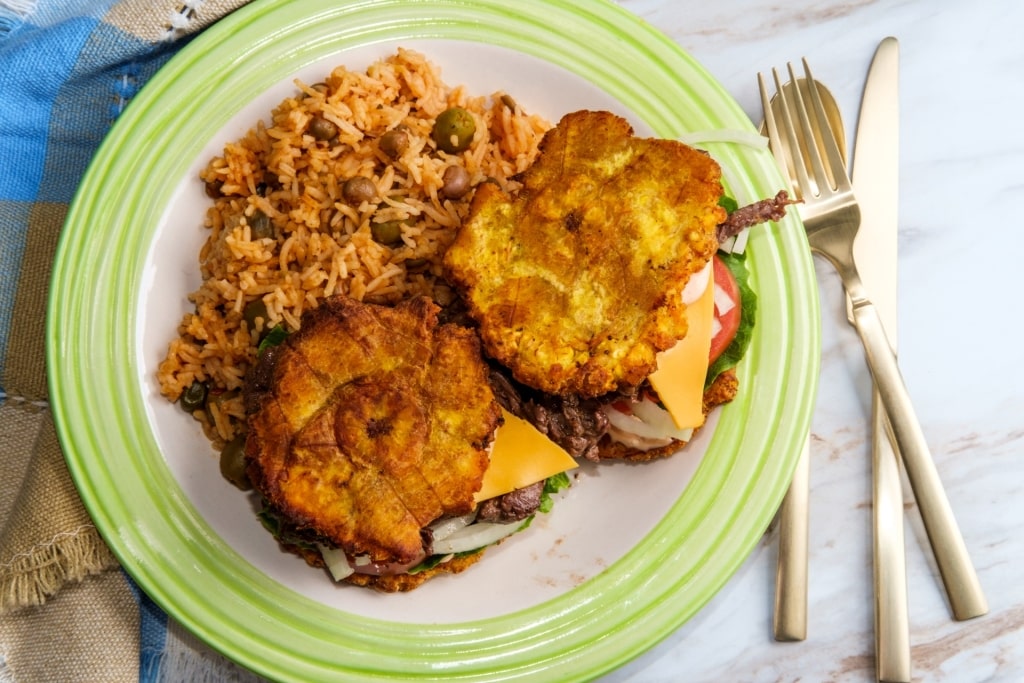
Arroz con gandules
Arroz con gandules is a staple for holidays and special occasions. Every cook has their own variation, adding various vegetables, different meat, or extra spices.
In a meal, it is often served alongside meat dishes such as roast pork. It’s a signature dish of any Puerto Rican community abroad.
Pernil
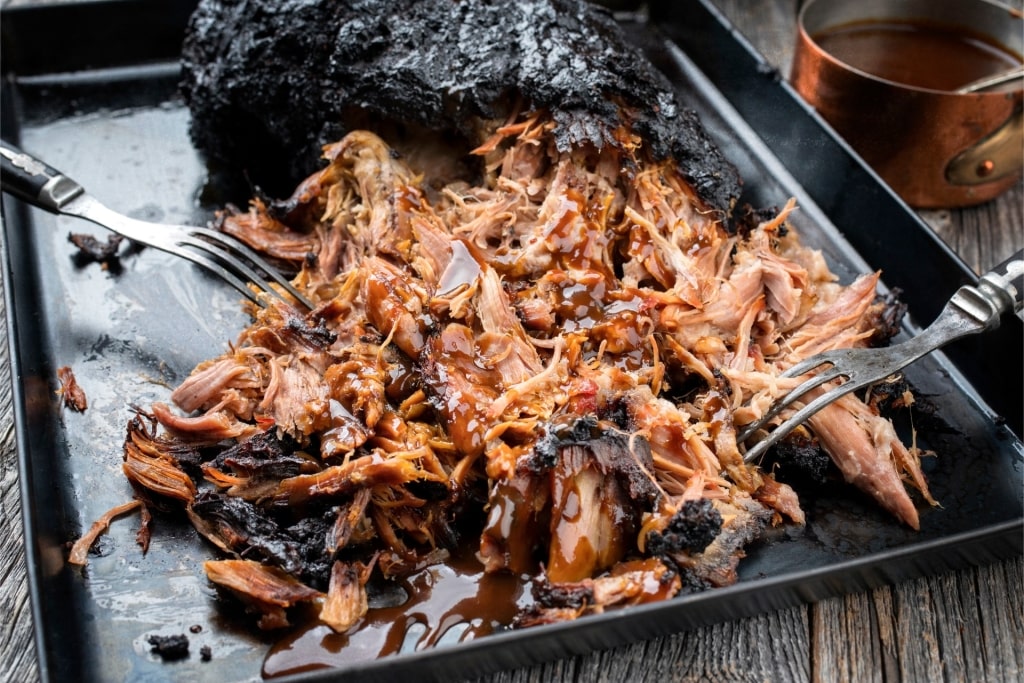
Pernil
Pernil—coming from the Spanish pierna, meaning leg—is a slow-roasted pork leg or shoulder. It’s marinated first in an adobo of olive oil, garlic, oregano, and sour orange juice or lime.
The pork is first scored with a knife to allow the marinade to penetrate deeply. It’s then left, preferably overnight and certainly for several hours, to infuse.
The pork is then roasted at a low temperature—around 350°F—for several hours. Toward the end, the heat is raised to ensure the meat is crispy on the outside, a key part of the dish.
Cooking can be done in the oven but slow cookers or outdoor grills or smokers are also common. The meat is typically served with arroz con gandules, and/or mofongo.
It’s worth pointing out that barbeque comes from a Taíno word. Columbus reported seeing the cooking process in 1492, so it has a long history here.
Lechón Asado
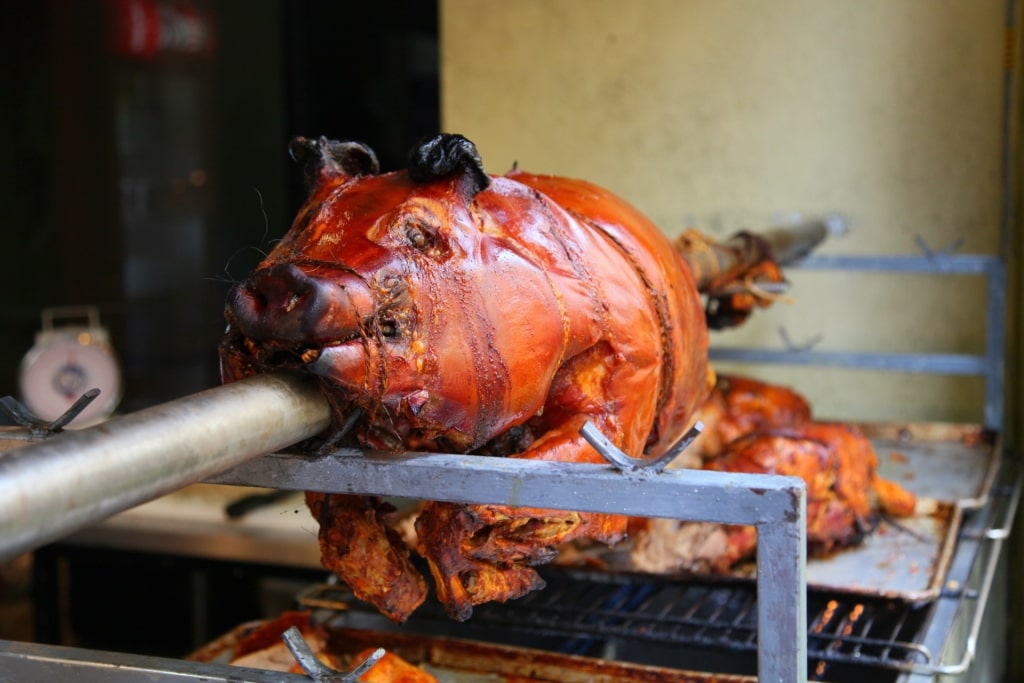
Lechón asado
Lechón asado is a whole roast suckling pig. The word lechón comes from the Spanish word leche for milk—meaning a young pig is the preference.
As with pernil, the meat is first seasoned in a marinade or dry rub. It is then slowly roasted over hot coals or a specialized roasting pit called a lechonera.
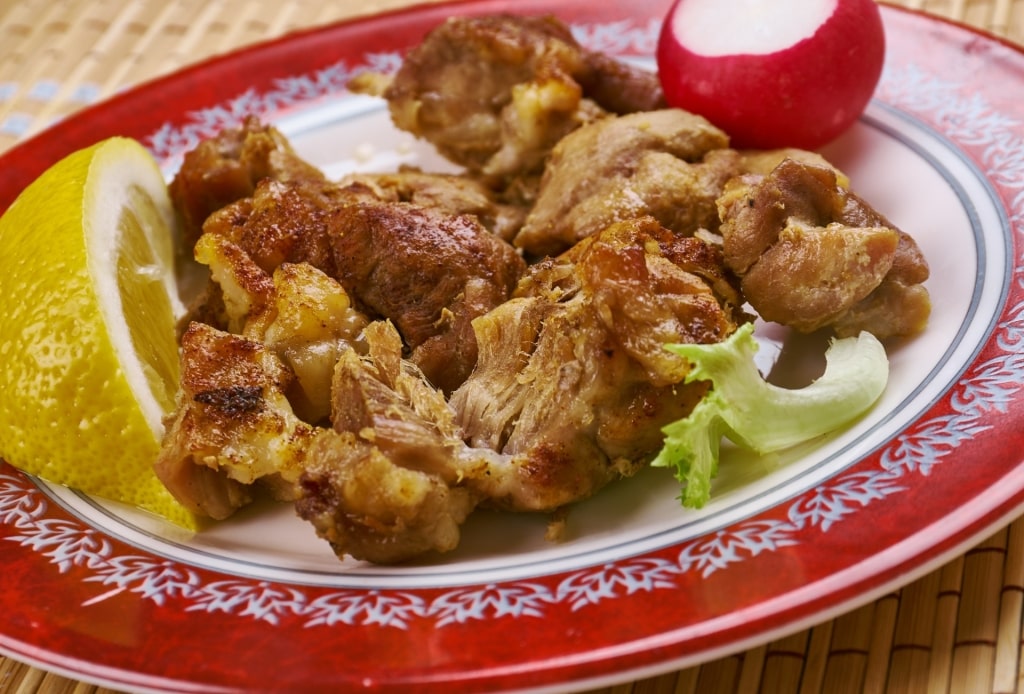
Lechón asado
Again, a crispy, golden-brown skin is important. The slow cooking—up to five or six hours rotating on a spit—keeps the meat inside tender.
Typically served at special occasions, lechón asado is often the centerpiece on special occasions, such as Christmas and New Year’s. The crispy skin, known as cuerito, is the most prized part.
The meat is shredded and served with sauces such as a simple mojo, which consists of olive oil, garlic, and fresh lime juice.
Pastelón
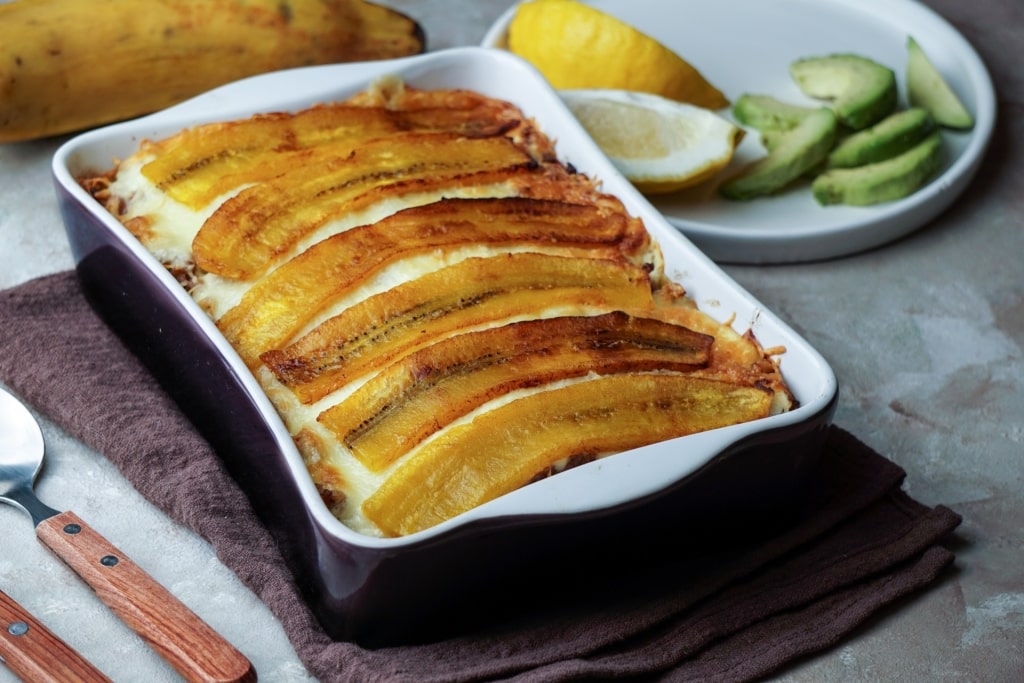
Pastelón
Pastelón is a sort of lasagne made with layers of sweet plantains rather than pasta. Its name comes from the Spanish word pastel, meaning cake or pie.
As with lasagne, the plantains are layered with ground beef and cheese, then baked in a casserole. The plantains are first sliced and then fried until golden-brown.
The beef is also fried in a sofrito of garlic, onions, and peppers. Shredded cheese, usually cheddar and mozzarella, is the final ingredient in this tasty comfort food.
There are many regional variations of pastelón, such as the addition of peas, or raisins. What’s constant is a balanced blend of sweet and savory tastes that is a characteristic of Puerto Rican cuisine.
Alcapurria
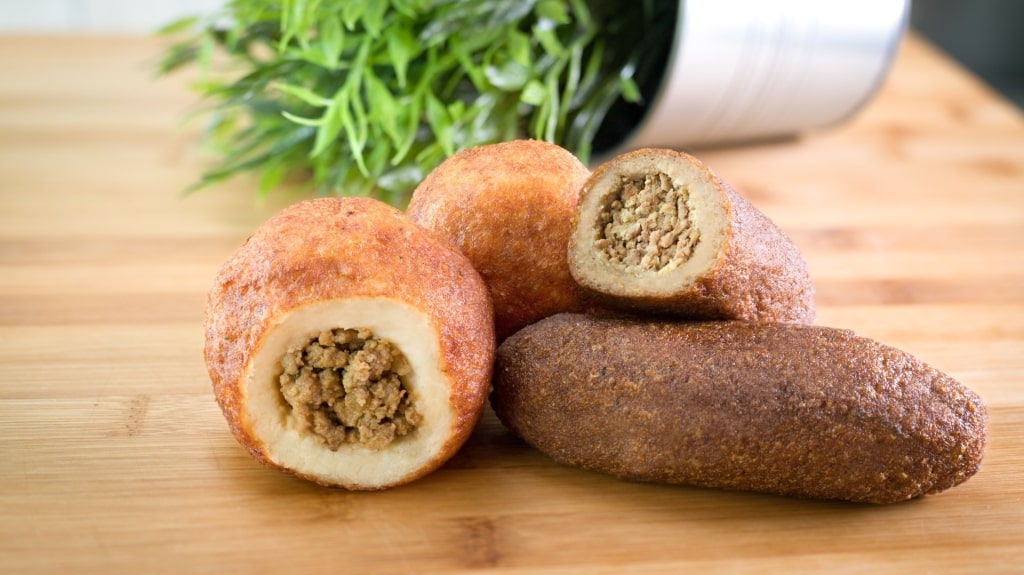
Alcapurria
Alcapurrias are traditional Puerto Rican fritters. They are made with a dough of green bananas, cassava, and green plantains.
This dough is filled with a savory mix of spiced ground beef with tomatoes. Formed into an oval shape, the alcapurrias are then deep-fried in oil until crispy.
Often served as an appetizer or snack, alcapurrias can also be a main dish. The crispy shell and savory filling are even better with a dipping sauce.
Variations, either regional or depending on the cook’s preferences, include pork or seafood, seasoned with a sofrito. If made with grated yucca, the fritter is typically filled with crab meat.
Pastelillos
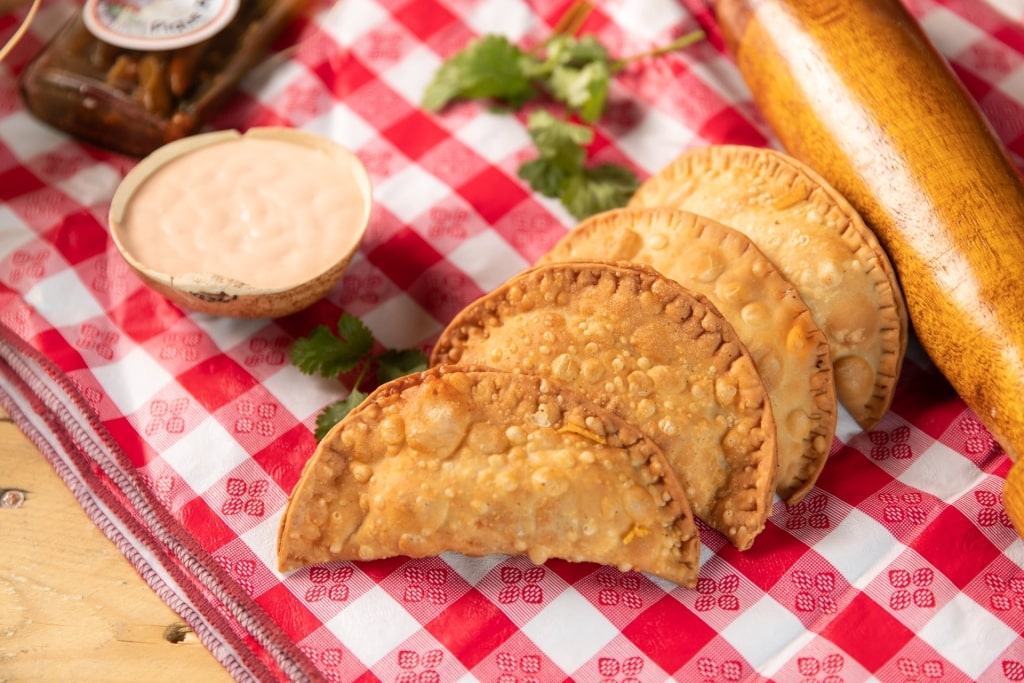
Pastelillos
Pastelillos or empanadillas—mini empanadas—are similar to alcapurrias but can be either baked or fried. The dough is also made from flour, butter or shortening, and water to give a lighter, flaky pastry.
The traditional shape is a half-moon and fillings include ground beef, chicken, cheese, or seafood. A mix of vegetables and meats or vegetables with cheese are also common.
Fried pastelillos are more common but you might prefer the version that is baked. They’ll give your stomach a rest from all the oil that dominates much Puerto Rican cuisine.
However, the crisp outside of a fried pastelillo, contrasting with the soft warm, savory filling, is a real guilty pleasure. You’ll find them as a street food, an appetizer, or a main course when served with rice, beans, or a salad.
Tostones
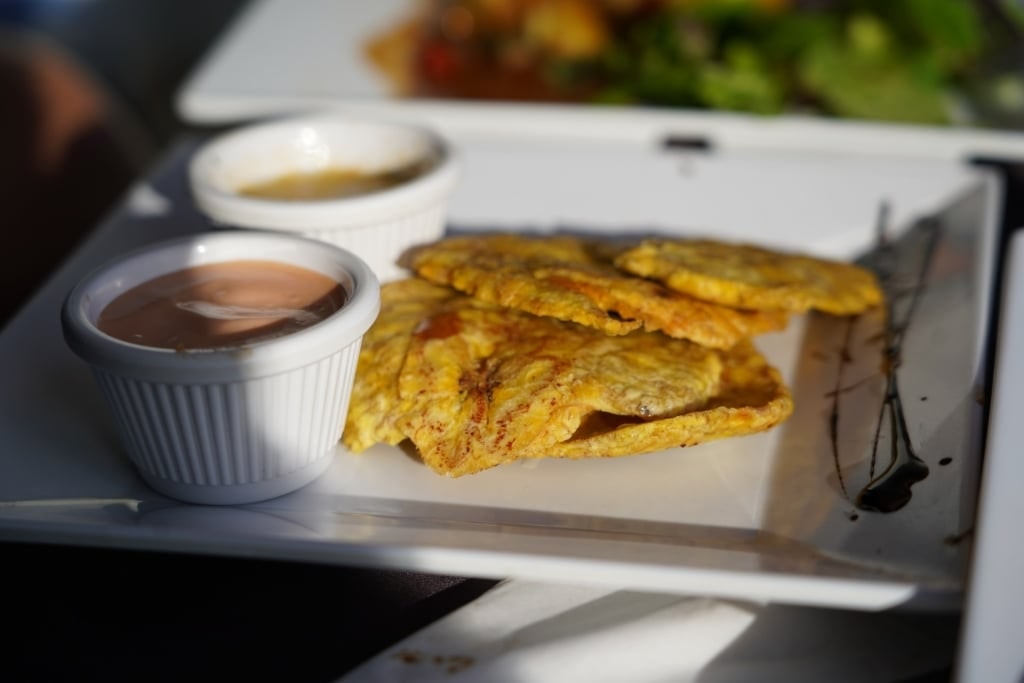
Tostones
Plantain is a central feature of Puerto Rico cuisines, seen at its best in tostones, a Puerto Rican food loved by all. These are thick slices of unripe green plantain, twice-fried in hot oil to make them crispy.
After the first fry, the slices are flattened with a wooden press. The second fry turns them an appetizing brown before they are seasoned with salt and spices.
Tostones are a more-ish snack or can be served as side to mains such as pernil or mofongo. You might also see them as a topping on seafood, meat, or cheese dishes.
You’ll find tostones—which have their roots in Taíno culture—in many Latin American and Caribbean countries. Platanos maduras fritos are a variation using ripe plantains for a sweeter taste.
Read: Puerto Rico vs. Costa Rica: Which Should You Visit?
Bacalaitos
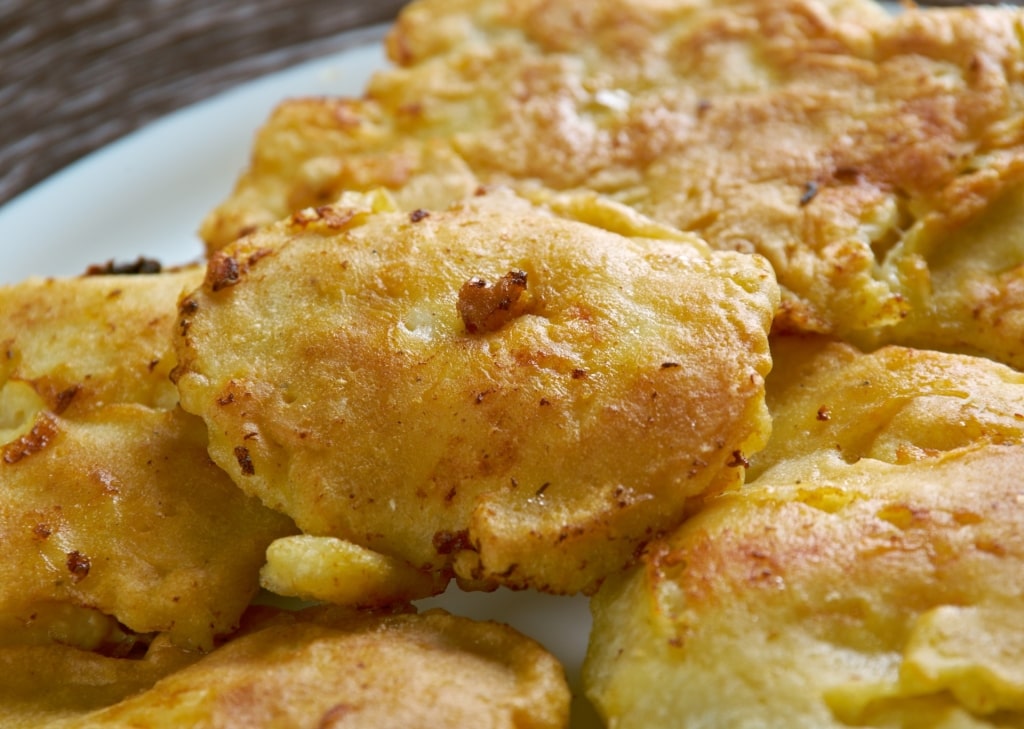
Bacalaitos
If you like fishcakes, you’ll love bacalaitos. These traditional Puerto Rican codfish fritters are made with salted, dried codfish.
After soaking to remove excess salt, the codfish is shredded and then boiled. It’s then added to a pancake-like batter with sofrito, garlic, peppers, herbs, and spices before being deep fried.
The crispy, golden-brown fritters make a great snack and are a common street food. They are delicious with mayo-ketchup—a popular “pink sauce” of garlic, mayo, and ketchup.
Pinchos
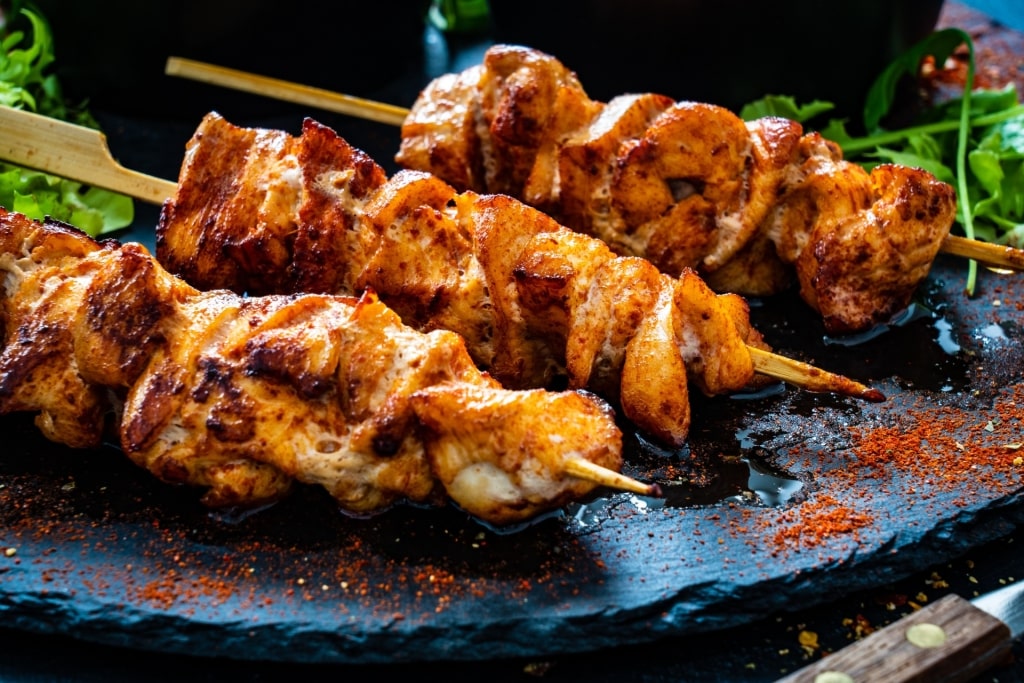
Pinchos
If you are looking for a break from fried food, then you are going to love pinchos. These skewers of grilled meat are a Puerto Rican street food staple.
“Pinchos” is the Spanish word for” small skewers” or “spikes”. They are traditionally made with small pieces of marinated chicken, beef, or pork, but now also with vegetables or seafood.
Using wooden or metal skewers, the ponchos are grilled over hot coals. Mayo-ketchup or pineapple-based chutney are the usual sauces.
Tembleque
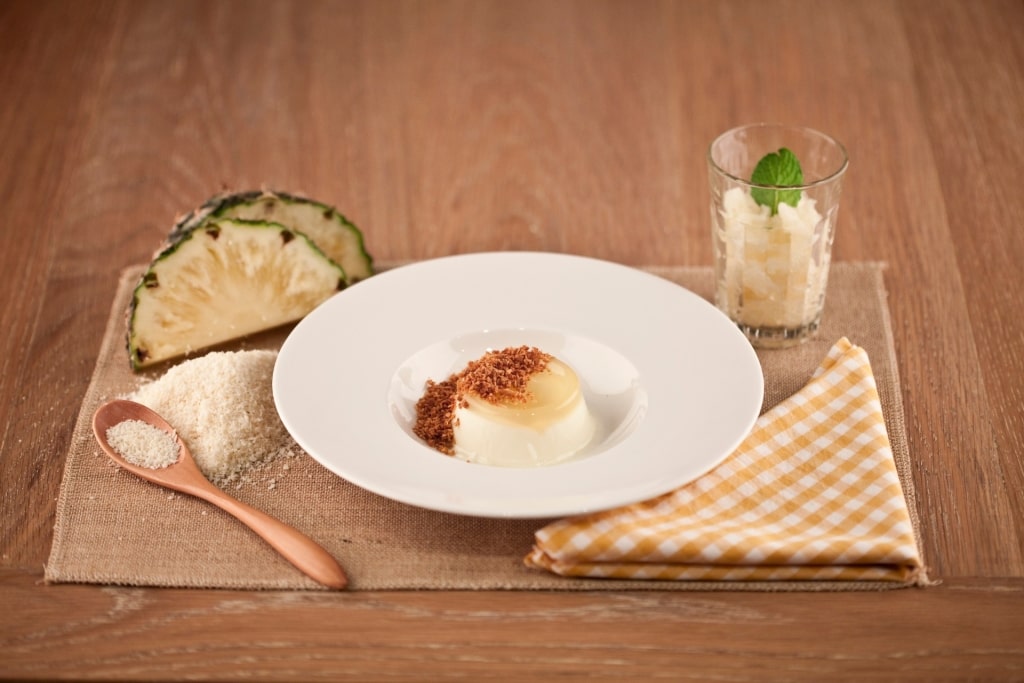
Tembleque
Anyone with a sweet tooth will love tembleque, a coconut pudding with a quivering, custard-like texture. Its name comes from the Spanish word temblar, meaning “to tremble”.
The ingredients include coconut milk, sugar, cornstarch, and salt. These are simmered until the mixture thickens. Then, it’s chilled until it sets.
A dusting of ground cinnamon is traditional, giving a subtle spicy contrast to the sweet coconut. You’ll find variations flavored with the likes of vanilla, lemon, or even rum.
Coquito
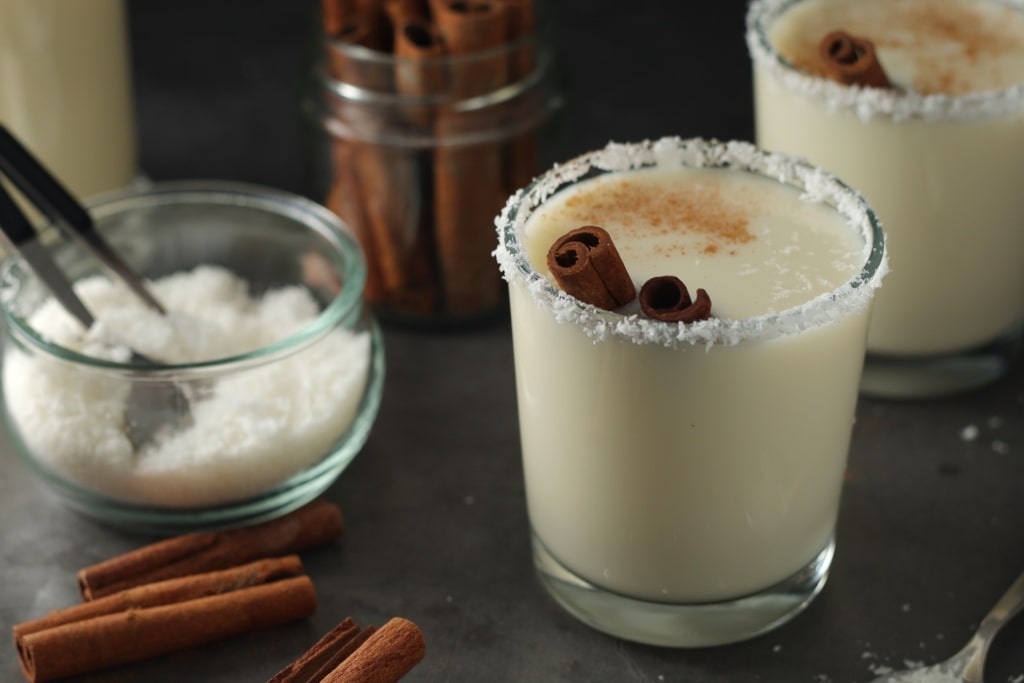
Coquito
Coquito—often called the “Puerto Rican eggnog”—is a traditional drink at Christmas and New Year’s. It’s made with coconut milk, sweetened condensed milk, evaporated milk, and rum.
The rum is usually white or gold rum and spices such as cinnamon and/or nutmeg help bring out its flavor. The coquito is chilled once mixed, making it thick, smooth, and creamy.
Ceviche
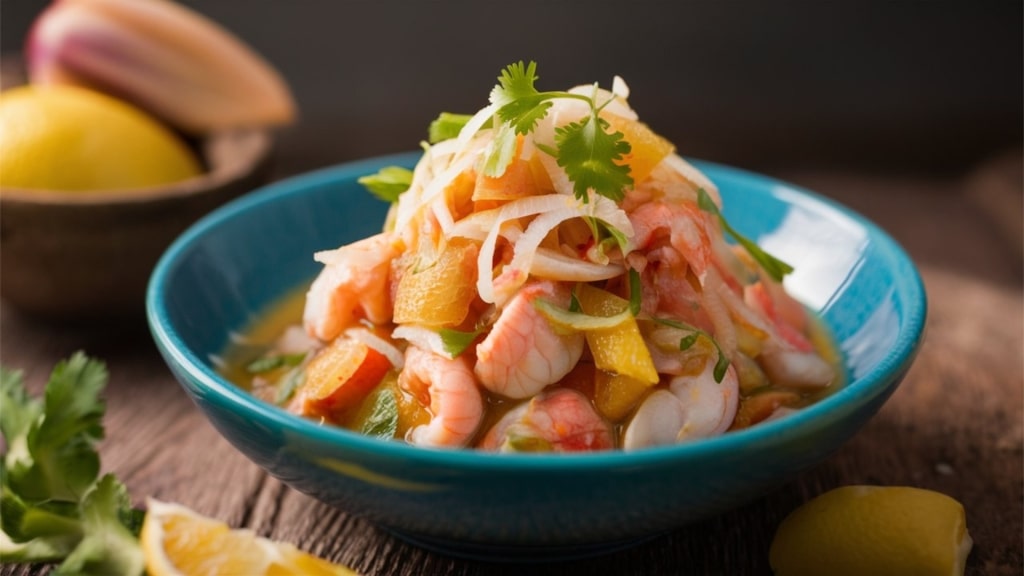
Ceviche
Ceviche—marinated raw fish—is found in many Latin American countries, but Puerto Rico’s version tends to be spicier. This local version might include anything from diced tomatoes and bell peppers to cilantro or even avocado.
The ceviche itself is made with fish or seafood, such as snapper or shrimp. The marinade—known as leche de tigre or “tiger’s milk”—is a combination of lime and orange juices with garlic, onion, and seasoning.
The marinade “cooks” the fish and adds a bright flavor to it. Ceviche is typically served chilled, with crackers, tostones, or rice.
Tripleta
A meal in itself, a tripleta is a sandwich filled with three meats: grilled steak, lechon pork, and ham. It’s then topped with fries, mayo-ketchup, cheese, lettuce, tomatoes, shredded cabbage, and onions.
If that sounds to you like it needs two hands to eat it, you’re right. In fact, it might even need two people to finish it.
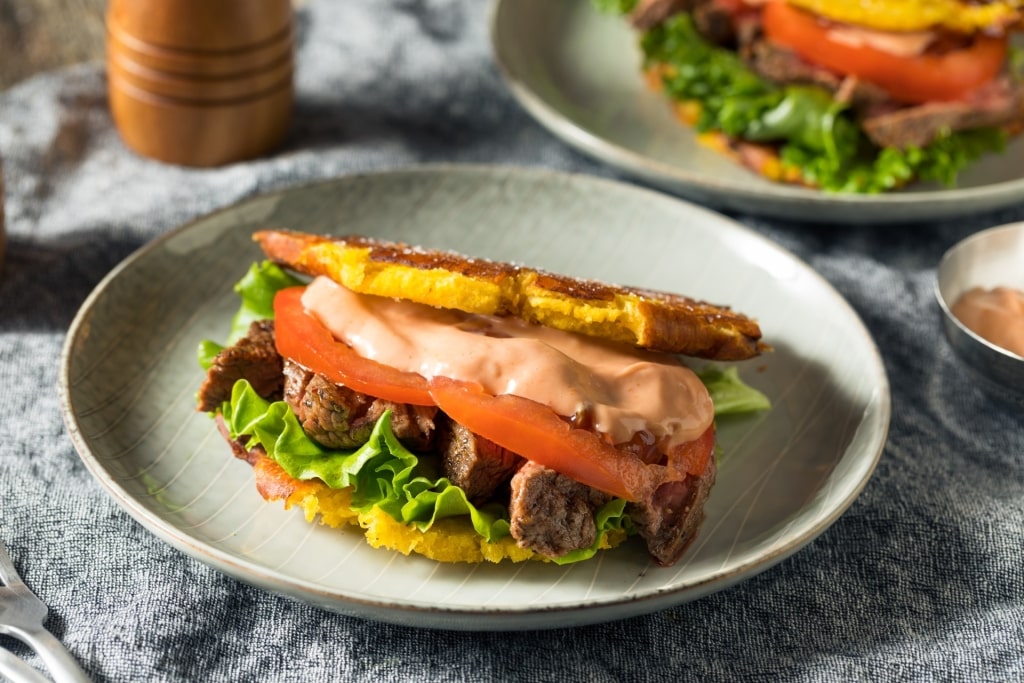
Jibarito
A sandwich variation is the jibarito, made with two slices of smashed, fried plantains instead of bread. It’s usually filled with sliced steak and Swiss cheese.
Pasteles
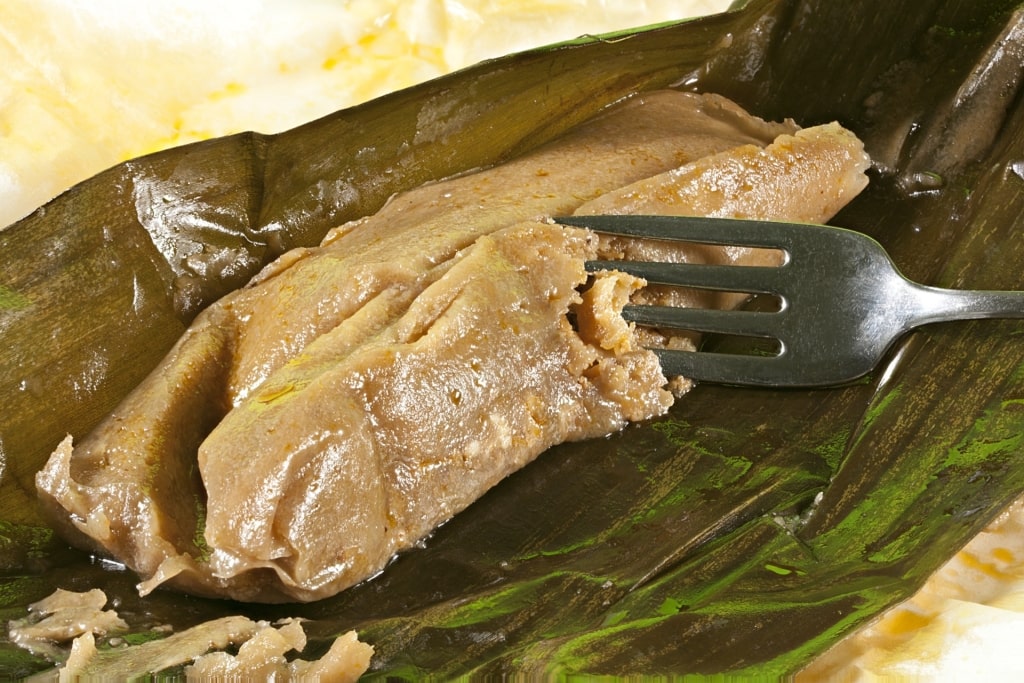
Pasteles
Pasteles are the Puerto Rican version of tamales, with a rich filling steamed in a banana leaf. They are too slimy for some tastes, but not being fried is a plus if you need a break from oily food.
They are a traditional treat at Christmas, along with arroz con gandules and pernil. Every family has its own “secret” recipe, passed down through the generations.
The typical filling is stewed pork or chicken, known as a guiso. The outer layer, the masa, is made with a dough of mixed cassava, taro, tropical pumpkin, and plantain.
Carne Guisada
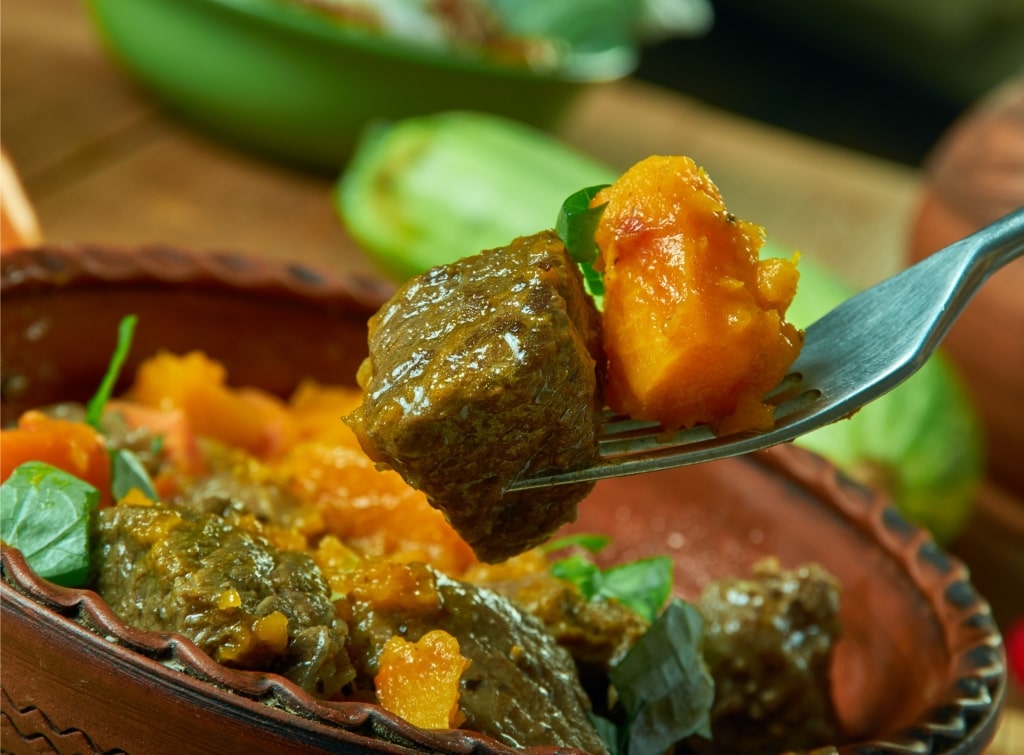
Carne guisada
This Puerto Rican beef stew is the ultimate in comfort food. Chunks of beef are simmered with potato and carrot in a sofrito-rich gravy.
The beef is seasoned first in a typical Puerto Rican sazon. This is a mix of salt, black pepper, paprika, garlic, onion, cumin, and turmeric.
A little white wine in the pot helps tenderize the beef and add extra flavor. A good handful of chopped cilantro is also added.
Carne guisada is served over white rice, often with a side of avocado. While beef is traditional, it’s also commonly made with chicken.
Read: Dominican Republic vs. Puerto Rico: Which Should You Visit?
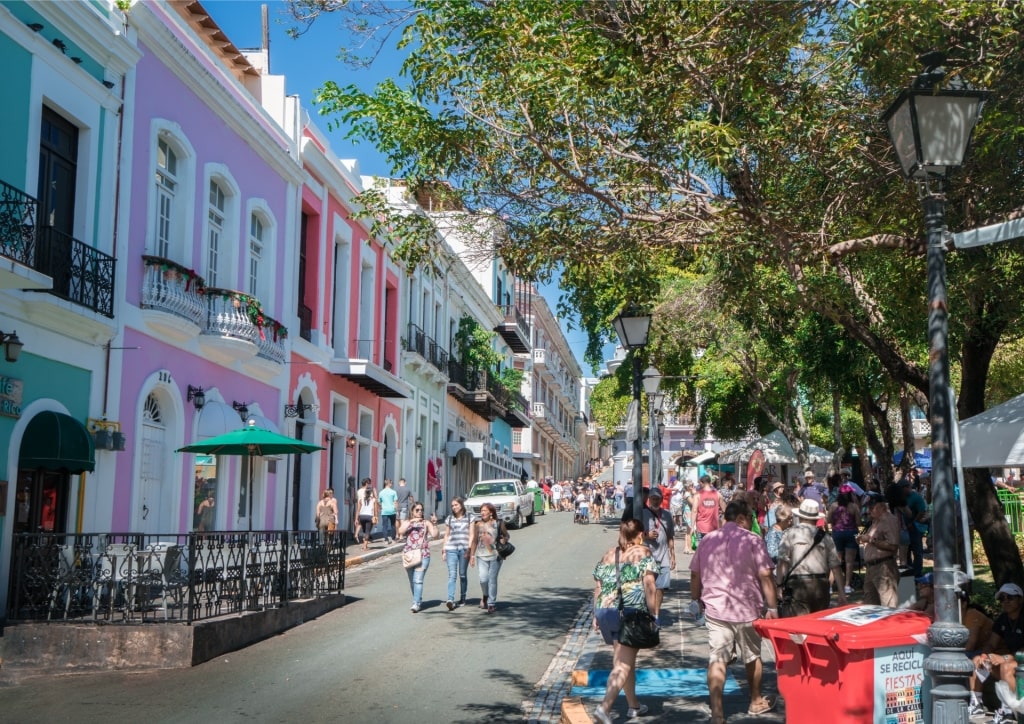
Old San Juan, Puerto Rico
Have you developed an appetite for these island specialties? Browse Celebrity’s cruises to Puerto Rico and plan your dream vacation.
